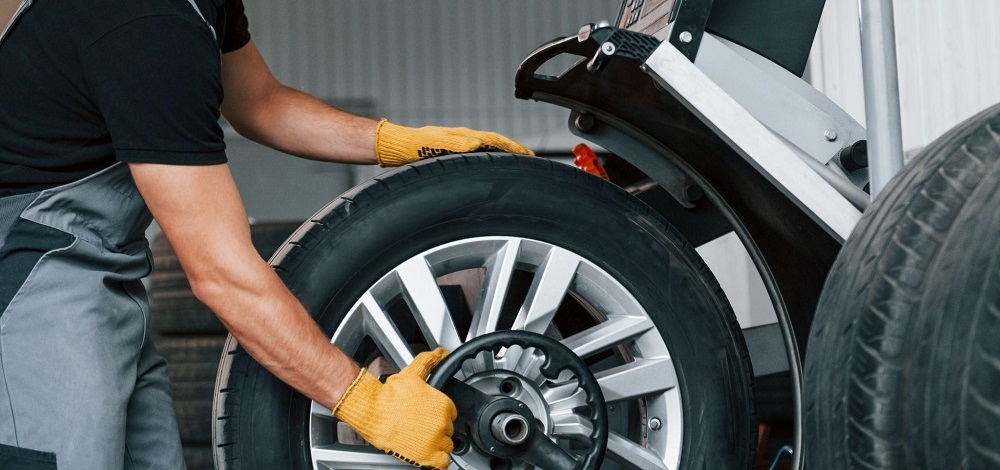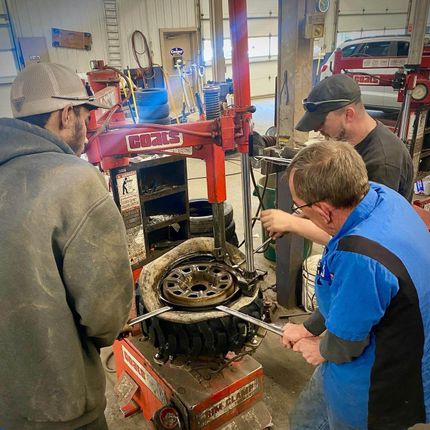Tire Solution: The Impact of Weather
When it involves making sure optimum performance and security on the road, understanding the influence of climate condition on tire service is important. From scorching warm to icy roadways, each weather condition aspect can significantly influence tire functionality and overall driving experience. By delving right into the effects of differing weather on tires, vehicle drivers can obtain useful understandings that might boost their car's performance and long life. In this discussion, we will check out the intricate partnership between weather condition problems and tire solution, losing light on the relevance of weather-specific tire maintenance methods and considerations.
Warmth and Tire Efficiency
When exposed to high temperature levels, tires experience adjustments in performance that can significantly impact lorry security and handling. The heat produced from long term driving or warm weather conditions creates the tire rubber to soften, leading to decreased step life and raised wear.

Winter Effects
Cold weather condition problems can have a substantial impact on tire efficiency and safety. In cold weather, tires might also shed air pressure extra rapidly, which can influence dealing with and gas efficiency.
To mitigate the effects of cold climate on tires, it is crucial to routinely check tire pressure and inflate them to the supplier's recommended levels. Using winter or all-season tires developed for cool climate conditions can also boost grip and grasp on icy or snowy roadways. Appropriate tire maintenance, consisting of routine examinations for wear and damage, becomes much more vital throughout chillier months to guarantee ideal performance and safety.
Rainy Conditions Impact
During rainy conditions, tire performance and safety can be dramatically influenced by the wet road surface areas and lowered visibility. The tread pattern of tires plays a crucial role in maintaining traction on damp roads. Tires with worn-out footsteps are a lot more vulnerable to hydroplaning, where a layer of water accumulates he has a good point between the tire and the road surface, resulting in loss of grip. To fight this, drivers should regularly inspect their tires for ample walk depth and think about buying tires particularly developed for wet conditions.
Additionally, wet weather condition can link likewise reduce exposure, making it challenging for chauffeurs to see the road ahead plainly (GMC Tire Service). In such conditions, it is necessary to change driving speeds appropriately and preserve a secure complying with range to enable for unexpected stops. Properly inflated tires can additionally aid in keeping control on wet roadways by offering better handling and hold
Snow and Tire Safety
Snow-covered roadways present one-of-a-kind obstacles for drivers, emphasizing the importance of correct tire selection and upkeep. When driving in snowy problems, having the right tires can make a significant difference in safety and security and performance. Wintertime tires are developed with unique rubber compounds and tread patterns to supply much better traction on snow and ice contrasted to all-season tires. The deeper treads and sipes of winter months tires aid grip the road better, minimizing the threat of sliding and gliding.

It is important to follow supplier read more directions when utilizing and setting up tire chains to protect against damages to the tires and vehicle. By selecting the right tires, keeping correct rising cost of living, and taking into consideration added grip aids like tire chains, motorists can enhance their security when navigating snow-covered roads.
Weather-Related Tire Upkeep
Weather-related tire maintenance incorporates a range of methods intended at guaranteeing optimal tire function and long life in different weather circumstances. One essential aspect of weather-related tire upkeep is tire stress law. Examining tire walk on a regular basis and replacing tires when step wear reaches a specific deepness is important for keeping traction and stability in negative weather.
Verdict
Finally, climate conditions have a substantial influence on tire performance and safety. From warm affecting tire pressure and use to winter lowering grip, it is vital to think about the weather condition when keeping and utilizing tires. Stormy problems can decrease hold and cause hydroplaning, while snow can boost the threat of mishaps if tires are not appropriately outfitted. Weather-related tire upkeep is vital in making certain optimum efficiency and safety and security when driving.
In this conversation, we will explore the complex connection between weather conditions and tire service, dropping light on the relevance of weather-specific tire maintenance practices and considerations.
